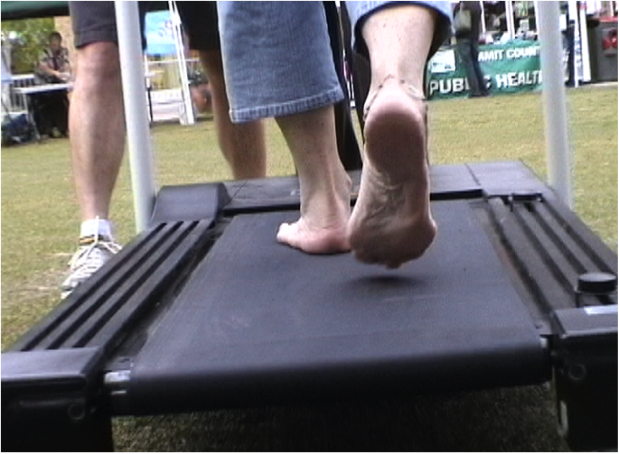So you want to do a Gait Analysis: Part 2
This is the second in a multi part series. If you missed part 1, click here.
We have been exploring the gait cycle, one step (literally) at a time. A quick review of the walking gait cycle components:
There are two phases of gait: stance and swing.
Stance consists of:
- Initial contact
- Loading response
- Midstance
- Terminal stance
- Pre-swing
Swing phase:
- initial (early) swing
- mid swing
- terminal (late) swing
today, lets explore Loading Response
we remember that Loading response occurs when there is eight bearing on the loaded extremity from initial contact. This continues until the opposite foot is lifted for swing.
Lets look at what is happening here at the major anatomical areas:
Foot
- Pronation begins: This is when the proverbial “rubber hits the road” occurs. Hopefully the coefficient of friction of the heel with the ground is great enough that pronation of the midfoot begins. As the calcaneus slows, the talus slides anteriorly and plantar flexes, adducts and everts, unlocking the subtalar joint and (hopefully) moving toward making its axis parallel with the calcaneo cuboid joint at midstance (more of that next time).
- because of this motion, the calcaneus everts approximately 5°
- both of these motions serve to lower the center of gravity of the leg, deepening the ankle mortise to provide more stability to the ankle
- Both of these motions (especially adduction of the talus) initiate internal rotation of tibia and lower leg
- these actions are attenuated by eccentric action of both the long flexors and extensors of the ankle, as well as the foot intrinsics
Ankle
- The ankle plantar flexes 5-10 °. This motion is attenuated by eccentric action of the anterior compartment muscles of the lower leg
- this serves to absorb shock (remember pronation is a shock absorber? if not, see here)
- Ankle rocker occurs (click here for a review of the rockers of the foot)
Knee
- Flexion to 20°. This is attenuated largely by the quadriceps, contracting eccentrically
Hip
- The hip is at full flexion at loading response and now begins to extend. This is facilitated by a brief contraction of the gluteus maximus (which started at initial contact)
Starting to see what is happening? Can you understand why you need to know what is going on at each phase to be able to identify problems?
We are The Gait Guys. Two geeks spreading the word. WE appreciate your help doing the same.

















